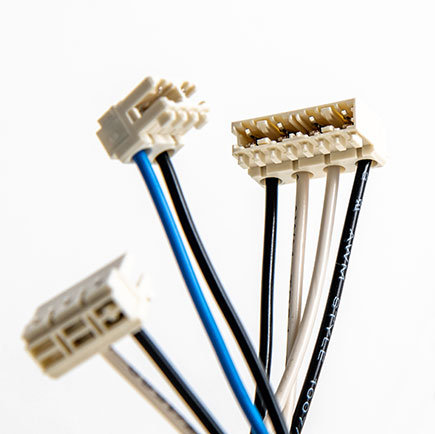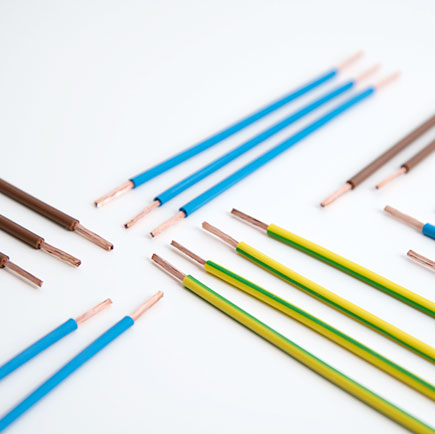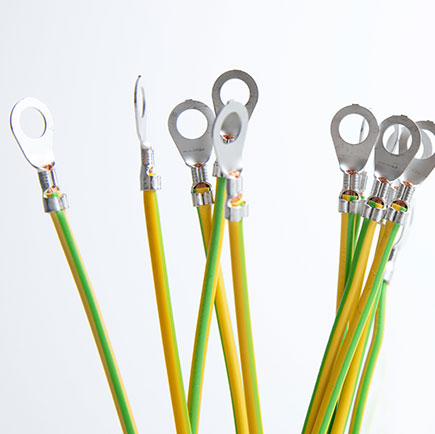
Twisting and twining
Twisted without interference
Especially in the field of telecommunications and computer applications, cables are susceptible to electrical or magnetic interference. To counteract this, conductors can be twisted together in a helical manner, a technique known as twisting or stranding. In practice, various stranding methods can be implemented: Pair stranding involves twisting two individual conductors into a twisted pair. The same principle is applied when stranding three or four individual conductors, while in four-strand stranding, pairs of conductors are formed that are positioned diagonally opposite each other.
The twisting results in alternating positive and negative partial areas between the conductors, thereby reducing the inductively coupled common-mode interference towards zero.
At Schneider Cable Harness Assembly, we twist conductors in the cross-sectional range from 0.14 mm² to 6 mm² for you. We utilize stranding machines to achieve an optimal twist of the cables.



